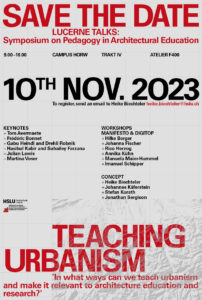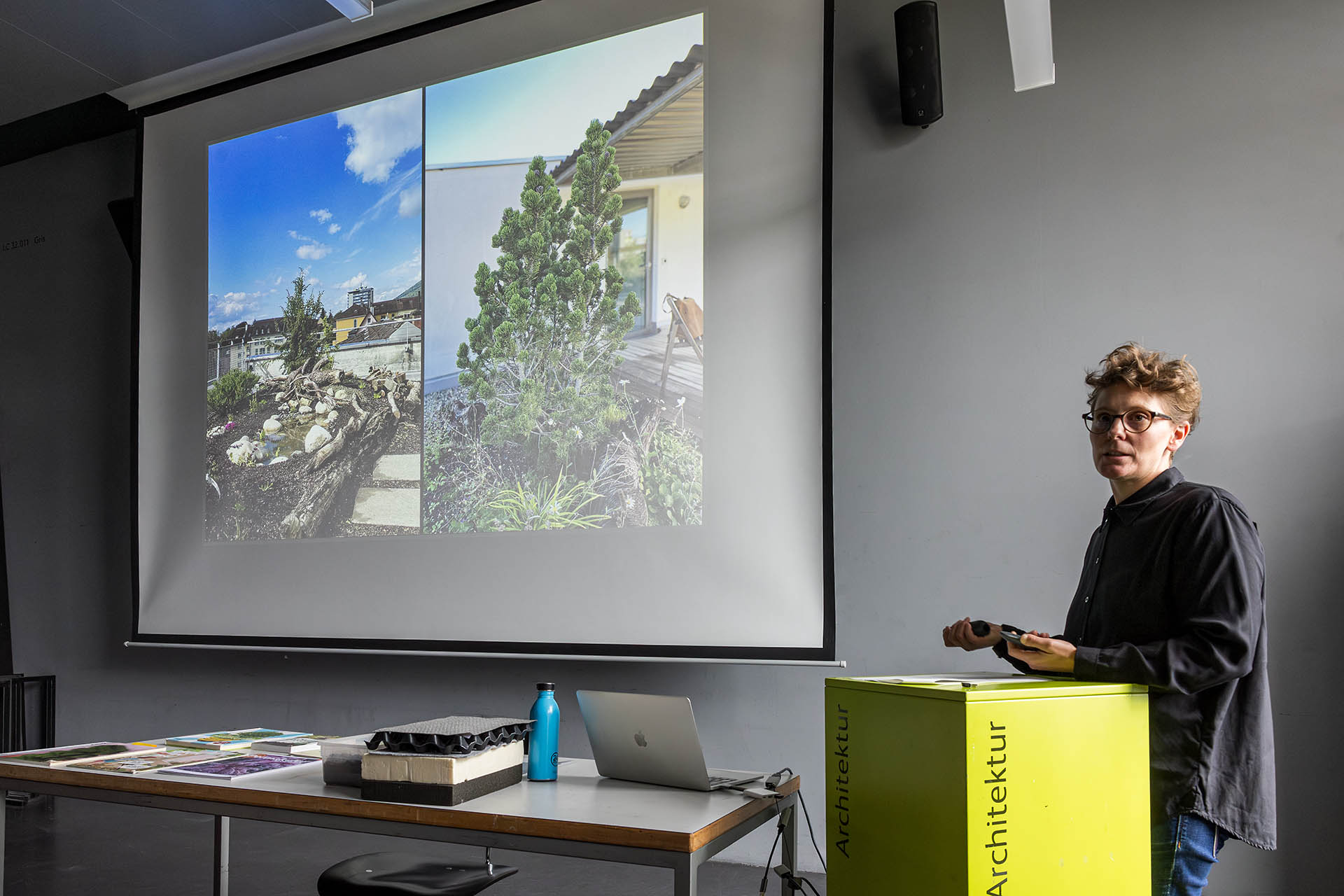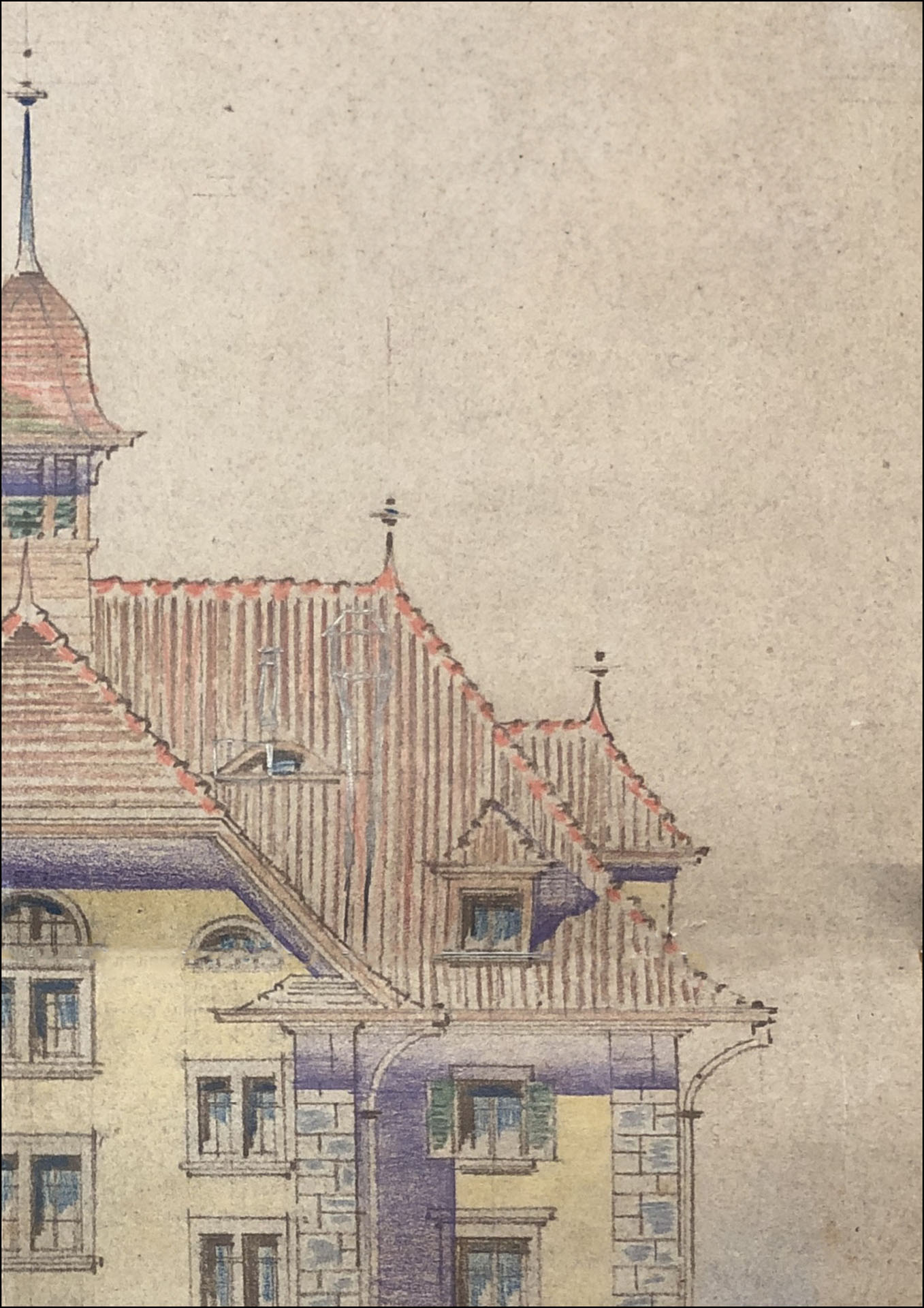Lucerne Talks Symposium for Architecturepedagogies: Teaching Urbanism

It is widely recognised today that there is a need to discuss and establish novel approaches to solving the demands on the built environment in contemporary terms. Recent experience has taught us that we must conceive new approaches for built environments. In all cases, it is necessary to ensure that everyone and every member of society is included in the shaping of cities and in regard to our shared habitat.
‘The lasting effects of the economic and financial crisis, the fourth industrial revolution, accelerated urbanisation, the shrinking of peripheral regions, migration and social change, increasing inequality, climate change and environmental damage are having a major impact…on our living environment.’ ([1] Davos Declaration 2018. Swiss Confederation, p. 10.)
These underlying conditions have far-reaching consequences for the planning of cities and urban situations at a more general level. They demand that we ‘carefully and sustainably think about all the resources available to us. Careful consideration must be given to the use of resources such as open space, green and forest areas, cultivated land and materials such as stone and brick, and natural elements such as water and fresh air……therefore it seems necessary that we rethink the city as a whole.’ ([2] Tom Avermaete; Grosse Pläne, grosse Herausforderungen, Die Rückkehr des Städtebaus, Du 910: 17. )
For architects, the overall notion of urbanism is concerned with two important issues: Firstly, the need to develop an understanding of cities and environments, which are the result of complex sociotechnical processes. And secondly, both general and specific approaches are required in which design plays a key role in developing solutions. We must therefore begin to understand that the processes of planning cities and environments are interconnected. The discipline of architecture cannot be addressed separately and alone, but only in collaboration with all the stakeholders involved. Arguably, we can only serve the collective needs of the common good and our living environment by being aware of our responsibilities to society and our interconnectedness within society.
In addition to developing an acute awareness of the challenges faced by the complex processes responsible for shaping contemporary cities and environments, we also need to ask how to incorporate interdisciplinary alliances – structurally and in terms of content. It goes without saying, however, that such implementation requires transdisciplinary ways of working, which first makes the step from awareness to action possible. In what way can architects, urban planners, landscape architects, and educators meet these challenges and work together accordingly – apart from propagating rhetorical phrases or political greenwashing? And furthermore, what specific role can architecture play in upcoming urban transformation processes in comparison with other disciplines?
What does it mean to work together to tackle the above-mentioned challenges? And in what way is it possible to ensure that all protagonists involved shoulder the highest possible degree of responsibility in the task of implementing change in urban situations?
Various strategic instruments have been formulated and promoted at political as well as academic levels to help create a common, methodological approach. These include labels such as ‘high-quality Baukultur’ (high-quality building culture) at a political level, based on the Davos Declaration, the New-European Bauhaus, and the United Nations’ Sustainable Development Goals, or, in more academic terms, the idea of the commons ([3] An Atlas of Commoning: Orte des Gemeinschaffens, ARCH+ 232 (07/2018).) . Smaller initiatives with longer traditions, such as the Swiss Wakkerpreis or the Cityscape Committee, address regional target groups by promoting public recognition of exemplary performance. In this way, they relate to specific sites and building projects. However, it is still not fully clear to what extent all parties involved pursue the same interests or how such approaches can be put into practice inclusively throughout society. All these initiatives seem to pursue similar ambitions. Across the various disciplines, they strive to tackle the challenges faced by society while also aiming to secure a certain level of quality within building culture and urban planning. The question that arises with all the initiatives, however, is to what extent are they actually inclusive throughout society and beneficial to it. In this sense, in German-speaking countries the term ‘building culture’ (Baukultur) might be more closely associated with the outmoded nineteenth-century educated middle class. The idea of the commons, on the other hand, might refer to some failed social experiment – at least in the past – because it did not deliver what it promised. Of course, original premises behind concepts can change and, in this way, have the potential to create new narratives. Moreover, we all live in different realities and have different associations with different needs.
Over the course of this symposium participants will be invited to reflect on the points made above and, more specifically, to address the following two questions.
1. What is the role of architecture in urban transformation processes and in which ways can architectural practice respond to current societal and ecological challenges, such as climate change, migration and social segregation, technology, and mobility, amongst others?
2. In what ways can we teach urbanism and make it relevant to architecture education and research?
Please register for the symposium, as well as the dinner, by Friday, 20th October 2023. Please also specify whether you would like to attend the dinner.
To register, send an email to: heike.biechteler@hslu.ch


